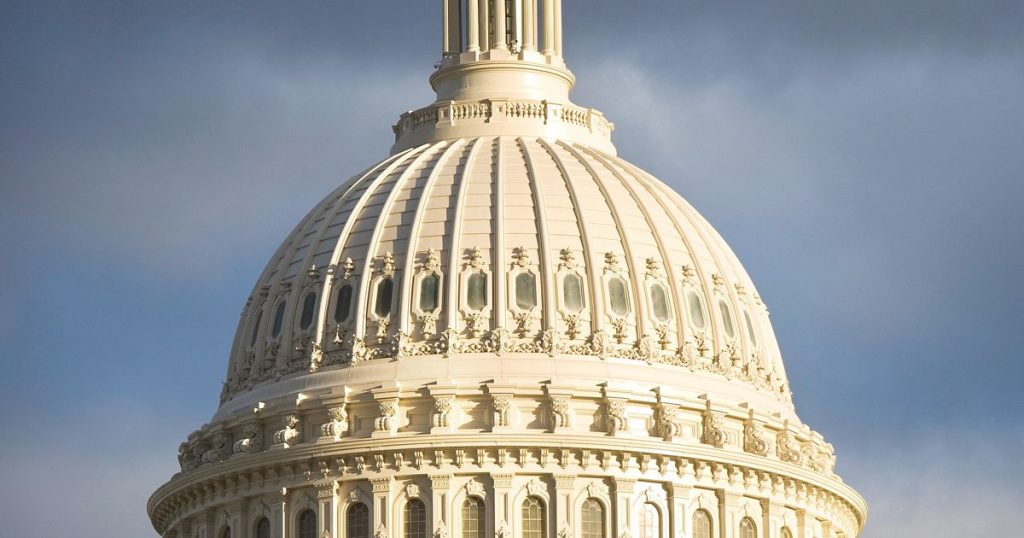‘Single biggest investment in climate change in U.S. history’
The bill would invest $369 billion over the decade in climate change-fighting strategies including investments in renewable energy production and tax rebates for consumers to buy new or used electric vehicles.
It’s broken down to include $60 billion for a clean energy manufacturing tax credit and $30 billion for a production tax credit for wind and solar, seen as ways to boost and support the industries that can help curb the country’s dependence on fossil fuels.
For consumers, there are tax breaks as incentives to go green. One is a 10-year consumer tax credit for renewable energy investments in wind and solar. There are tax breaks for buying electric vehicles, including a $4,000 tax credit for purchase of used electric vehicles and $7,500 for new ones.
In all, Democrats believe the strategy could put the country on a path to cut greenhouse gas emissions 40% by 2030, and “would represent the single biggest climate investment in U.S. history, by far.”
Not a Modern Healthcare subscriber? Sign up today.
How to pay for all of this?
The biggest revenue-raiser in the bill is a new 15% minimum tax on corporations that earn more than $1 billion in annual profits.
It’s a way to clamp down on some 200 U.S. companies that avoid paying the standard 21% corporate tax rate, including some that end up paying no taxes at all.
The new corporate minimum tax would kick in after the 2022 tax year and raise some $258 billion over the decade.
The revenue would have been $313 billion, but Sinema insisted on one change to the 15% corporate minimum, allowing a depreciation deduction used by manufacturing industries. That shaves about $55 billion off the total revenue.
Money is also raised by boosting the IRS to go after tax cheats. The bill proposes an $80 billion investment in taxpayer services, enforcement and modernization, which is projected to raise $203 billion in new revenue — a net gain of $124 billion over the decade.
The bill sticks with Biden’s original pledge not to raise taxes on families or businesses making less than $400,000 a year.
The lower drug prices for seniors are paid for with savings from Medicare’s negotiations with the drug companies.
What’s changed in recent days?
To win over Sinema, Democrats dropped plans to close a tax loophole long enjoyed by wealthier Americans — the so-called “carried interest,” which under current law taxes wealthy hedge fund managers and others at a 20% rate.
The left has for years sought to boost the carried interest tax rate, hiked to 37% in the original bill, more in line with upper-income earners. Sinema wouldn’t allow it.
Keeping the tax break for the wealthy deprives the party of $14 billion in revenue they were counting on to help pay for the package.
In its place, Democrats, with Sinema’s nod, will impose a 1% excise tax on stock buybacks, raising some $74 billion over the decade.
Download Modern Healthcare’s app to stay informed when industry news breaks.
Extra money to pay down deficits
With some $740 billion in new revenue and around $433 billion in new investments, the bill promises to put the difference toward deficit reduction.
Federal deficits spiked during the COVID-19 pandemic when federal spending soared and tax revenues fell as the nation’s economy churned through shutdowns, closed offices and other massive changes.
The nation has seen deficits rise and fall in recent years. But overall federal budgeting is on an unsustainable path, according to the Congressional Budget Office, which put out a new report this week on long-term projections.
What’s left behind
This latest package after 18 months of start-stop negotiations leaves behind many of Biden’s more ambitious goals.
While Congress did pass a $1 trillion bipartisan infrastructure bill for highways, broadband and other investments that Biden signed into law last year, the president’s and the party’s other key priorities have slipped away.
Read more: Bipartisan infrastructure bill would extend Medicare cuts to providers
Among them is a continuation of a $300 monthly child tax credit that was sending money directly to families during the pandemic and is believed to have widely reduced child poverty.
Also gone, for now, are plans for free pre-kindergarten and community college, as well as the nation’s first paid family leave program that would have provided up to $4,000 a month for births, deaths and other pivotal needs.
